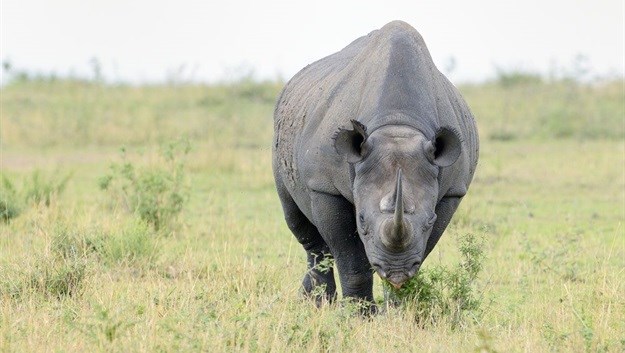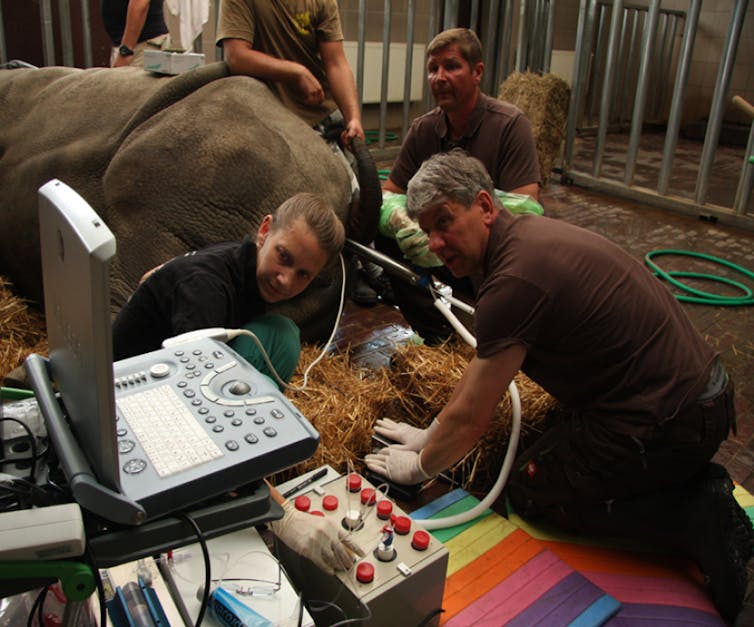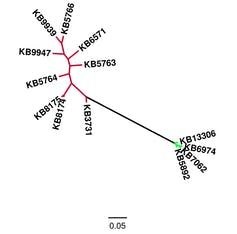






The international team of researchers, led by Professor Thomas Hildebrandt from the Leibniz Institute for Zoo and Wildlife Research, have used an existing assisted reproduction technology developed for horses, and applied it to the white rhino. Eggs and sperm from northern white rhino are in short supply, due to the rarity of the subspecies. So the team also used material from southern white rhino, successfully fertilising southern eggs with sperm from both northern and southern subspecies, proving that the process works.
Only seven out of 314 fertilised eggs developed into embryos – a roughly 2% success rate – but the research demonstrated three important steps. First, that rhino eggs can be captured from live females. Second, that they can be fertilised using IVF and developed to the “blastocyst” early embryonic stage (ready for transfer to a surrogate female) – and that this can be done as a hybrid of southern and northern rhino. And third, that the resulting embryos can be frozen without damage.

This process is technically very challenging. A special device was developed to enable the operators to extract oocytes (unfertilised eggs) from the ovaries of anaesthetised female southern white rhino from a number of European zoos. This is a three-person job requiring a steady hand that can guide a needle of just over 1 millimetre in diameter and almost 1 metre in length into the reproductive system via the rectum to capture the eggs.
The next step will be to transfer three of the embryos that have been frozen to the uterus of surrogate southern white rhino for gestation and birth. This final step toward the birth of a calf containing northern white rhino DNA is no small step, as artificial insemination in rhino has rarely been attempted. San Diego Zoo is currently evaluating six surrogacy candidates, and has already successfully artificially inseminated one with southern white rhino sperm.

The four other embryos produced were used to evaluate the potential for creating sperm and eggs from the genetic material of northern white rhino whose sex cells are not already available. While this only worked for southern white rhino embryos and not the hybrids, it did demonstrate the method could be successful.
As the first demonstration of this process working for rhino, the research is significant, impressive and exciting. It offers a possibility to rescue the genes of a subspecies that, following the death of the last male northern white rhino earlier this year, is now represented by just two elderly females. And if the method works for the rhino, it should be possible to extend it to other endangered large mammals.
The key question of whether scientists can produce pure northern white rhino embryos using this technique remains unanswered. But, even if it is possible, what would be the point? Ultimately, to be useful, these manipulative techniques need to increase the chance of survival of endangered (wild) animal populations. Otherwise, artificially engineered fertilisation and the management of genes has little value for nature conservation.

To my mind, the time to save the northern white rhino has passed. If we could not save it when it was here (the last wild northern white rhino is thought to have disappeared around 2006) it seems unlikely we could conserve a resurrected wild population now or in the foreseeable future. The purpose of simply preserving the subspecies’ genes in a new hybrid rhino (in captivity), and whether it would be worth all the effort, is unclear.
Recent research by Dr Tate Tunstall of the San Diego Zoo Institute for Conservation Research and colleagues indicates that there may be enough genetic diversity in the frozen northern white rhino material (from only 12 individuals) to provide a suitably diverse founder population for resurrection. They also showed that the genetic differences between the northern and southern subspecies may be the result of evolutionary adaptations to different habitats.

An alternative strategy to resurrection would be to secure a safe habitat in the former northern white rhino’s range of central East Africa, populate it with southern white rhino and let natural selection run its course. The introduced rhino population would be expected to evolve over generations to adapt to their new environment and fill the ecological role left vacant by the northern white rhino.
There are already southern white rhino currently living and breeding in Uganda at the Ziwa Sanctuary. Restoration ecologists have similarly replaced extinct giant tortoises with related species in a process called taxon substitution. Taxon substitution using the southern white rhino would be simpler and more cost-effective than manipulating genes and introducing manufactured hybrids, and would likely have a higher probability of success.
I am concerned that new technologies, such as the creation of these hybrid rhino embryos, are distracting us from on-the-ground conservation and dealing with the root causes of endangerment. There is a growing pervasive psychology that we need to preserve genes for some utopian future. The desperate logic of mixing subspecies and applying assisted reproduction technology is also being discussed regarding the Sumatran rhino.
![]() Saving bits of dead animal now to bring back species (or subspecies) in the future perpetuates the delusion that everything will be okay at some point. We need action now. Jurassic Park-esque scientific advances will only work if we save habitats, stop pollution, constrain invasive species, reverse climate change and halt poaching. Otherwise, I fear that we will still be loading samples onto the frozen ark as the lights go off on an otherwise empty Planet Earth.
Saving bits of dead animal now to bring back species (or subspecies) in the future perpetuates the delusion that everything will be okay at some point. We need action now. Jurassic Park-esque scientific advances will only work if we save habitats, stop pollution, constrain invasive species, reverse climate change and halt poaching. Otherwise, I fear that we will still be loading samples onto the frozen ark as the lights go off on an otherwise empty Planet Earth.

The Conversation Africa is an independent source of news and views from the academic and research community. Its aim is to promote better understanding of current affairs and complex issues, and allow for a better quality of public discourse and conversation.
Go to: https://theconversation.com/africa